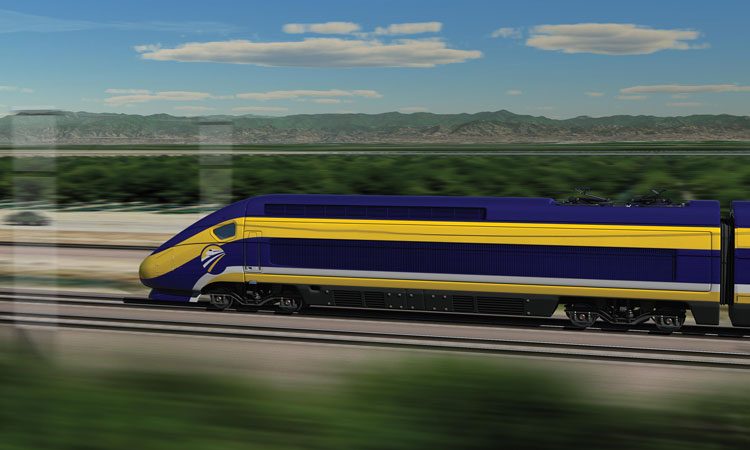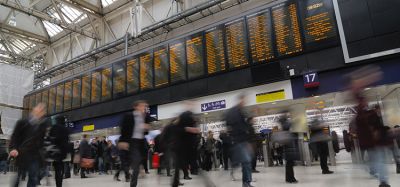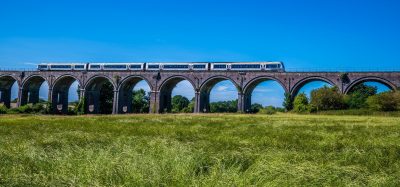California High-Speed Rail Authority to open workforce development centre
Posted: 29 April 2020 | Global Railway Review | No comments yet
The workforce development centre will provide pre-apprenticeship classes and hands-on construction industry training for local residents who are looking for work on the California high-speed rail project.


California high-speed rail conceptual image - Photo Credit: http://www.hsr.ca.gov
The California High-Speed Rail Authority (Authority) has partnered with the City of Selma to create a workforce development centre that will provide programmes aimed at serving veterans, at-risk young adults, minority and low-income populations between the counties of Fresno, Kings, Tulare, Kern, Madera and Merced. The centre is due to open in summer 2020 when the state and the nation will look to identify expanded employment opportunities for individuals whose employment has been affected by the COVID-19 pandemic.
Mayor of Selma, Louis Franco, said: “This new workforce development centre is not only a tremendous benefit for the City of Selma, but the entire Central Valley. The partnership the City and the Authority have developed to provide pre-apprenticeship training will give residents of Selma and the Central Valley the opportunity to enter into a career pathway that will afford a better quality of life for themselves and their families. As we all deal with the effects of the COVID-19 pandemic and global recession, the California High-Speed Rail Workforce Development Center will be a significant asset to our recovery.”
Authority Vice Chair, Tom Richards, added: “Through this training centre, we can equip the men and women of California to continue building monumental projects like the high-speed rail system. This is a step forward, not only for this project, but for our workforce across the state.”
Authority Board Member, Henry Perea, said: “We identified the city of Selma to send a message that we are reaching out to rural communities. Selma’s proximity to other cities allows us to bring quality programmes to our residents and prepare them for a rewarding career in the construction industry.”
Taught by skilled craft persons in the trades, the pre-apprenticeship courses will provide students with 16 weeks of customised classroom instruction to help fulfill the labour force training needed for the high-speed rail project. Hands-on shop training and instructional project work will be provided to students, along with industry specific certifications. Job placement assistance will be provided to all graduating students of the programme through coordination with the high-speed rail project and its contractors. Key components of the curriculum will include:
- Orientation to the construction industry
- Surveying and blueprint reading
- Fundamentals of structural steel and ironwork
- Fundamentals of framing, form, foundation work, and cement work
- Basic electrical and wiring work
- Hazardous waste and lead abatement training
- Computer Assisted Drafting (CAD)
- Construction-related physical fitness training and job safety.
In coordination with the Federal Railroad Administration (FRA), the Authority established the training centre in the city of Selma to fulfill the Mitigation Monitoring and Reporting Program as part of its California Environmental Quality Act requirement to address impacts on environmental justice populations and maximise local employment opportunities with the high-speed rail project.
In just the first week of April 2020 alone, more than 800 workers were dispatched to 32 active construction sites between Madera and Kern counties. Since the start of construction, more than 3,700 construction workers have been dispatched to work on the high-speed rail project. There are now more than 550 certified small businesses also working to build the Central Valley segment.
When completed, Phase 1 of the high-speed rail system will run from San Francisco to the Los Angeles basin in under three hours at speeds capable of over 200mph. The system will eventually extend to Sacramento and San Diego, totaling 800 miles with up to 24 stations. In addition, the Authority is working with regional partners to implement a statewide rail modernisation plan that will invest billions of dollars in local and regional rail lines to meet the state’s 21st century transportation needs.
Related topics
Related organisations
California High-Speed Rail Authority (CHSRA), Federal Railroad Administration (FRA)








